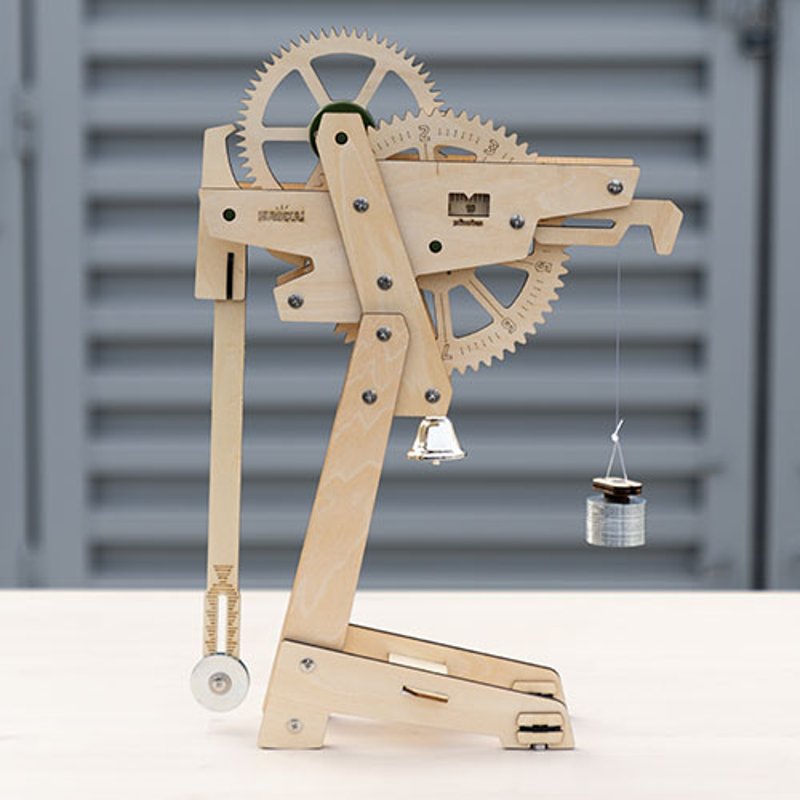Gravity Timer
In this Eureka Crate, you'll explore the science, engineering, and history behind gravity timers while building one of your own!

Explore:
- Escapements
- History of Alarm Clocks
- Pendulums
Behind the design
Peek into the KiwiCo product design studio and the design process behind the Eureka Crate Gravity Timer.
- We built your gravity timer’s first escapement (the mechanism a timekeeping device uses to keep time) long before we knew it was for a timer — it was more to see if we could even make one than to use it for a product. This escapement was designed to be wall-mounted like a cuckoo clock, and it used two pendulums to control a pegged escape wheel. Once we got the escapement actually working, we were able to think about how it could be a product, and eventually it became your timer!
The Great Escape-ment
- All the pieces in your timer had many, many iterations as we developed and refined their designs. Check out how these drive wheels changed from early prototype to the final version! The different minute numbers really stand out, but we adjusted even subtle things like the drive wheel’s teeth to help the timer run better.
Time Keeps On Spinning
- We knew the weight took about 30 minutes to drop from the top of the timer down to whatever the timer was standing on. But when the weight got there, some cord would always still be spooled on the drive wheel. We had to find out how long it took to run it all the way out: and with a few stacked books, a little sacrificed desk space, and a lot of patience, we timed a full drop at 2 hours and 24 minutes. Let us know if you can get yours to run longer!
Maximum Runtime
